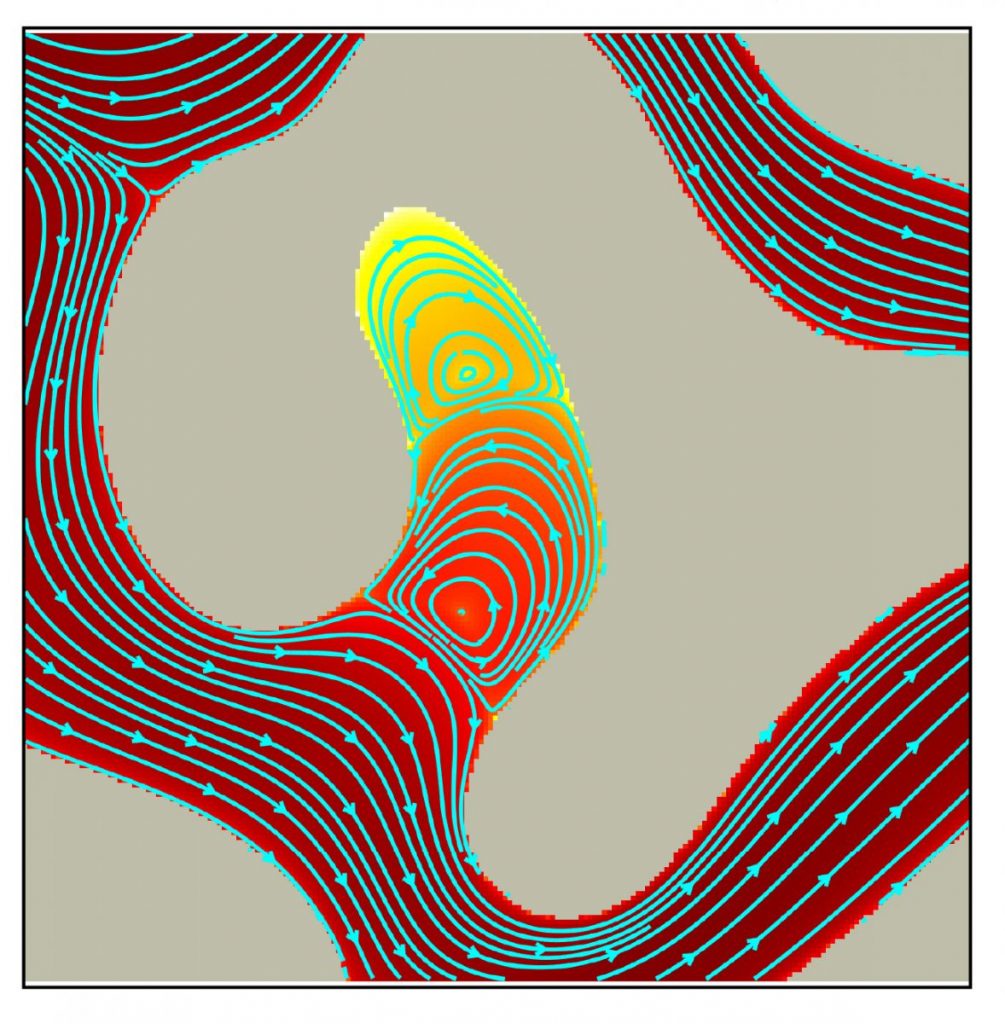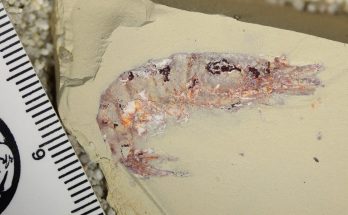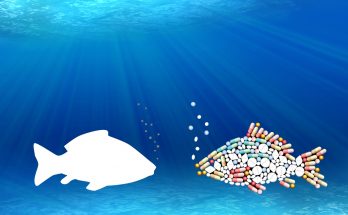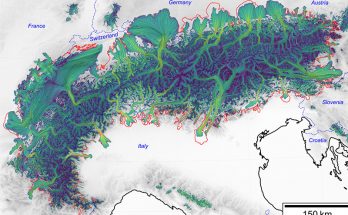Cette publication est également disponible en :
![]() Français
Français
An important study published in Nature Communications describes through modeling the physical influence of microstructures in porous media on the global transport of particles entrained by fluids.
This fundamental advance in the field of fluid dynamics is anything but trivial in view of its numerous fields of application, from the environment to medicine, from scavenging in rivers to remineralization or decontamination of soils, to blood flow or to the transport of molecules in biological membranes and tissues.
A few drops of serendipity
How did Dr. Ankur D. Borodoloi and Dr. David Scheidweiler, two postdocs at the Institute for Earth Sciences (ISTE), successfully model fluid transport in porous media?
During their work in the Fluid Mechanics Laboratory, studying the transport of particles inside an artificial substrate that closely mimics the structures of porous media, these two young researchers found that their observations did not match the predictions of established models (based mainly on passive diffusion principles). In particular, they found that the particles (colloids) took significantly longer to pass through the medium than expected.
They therefore extended their study by observing the flow of these colloids in the very heart of the microstructures constituting the substrate. By compiling thousands of fluorescence microscopy images, they were able to identify that convection currents were created inside “dead-end” pores, keeping some of the particles “trapped”. This result was unexpected, as it was not imagined that such currents could be created on such a small scale.
A mathematical model was then established, in order to describe and predict the transport speed of microparticles and the time needed for them to cross a porous medium. The key factors of this model are the thickness of the medium and the distribution of the size of the pores it contains. A better understanding of these subtle mechanisms opens up many development perspectives. Pietro de Anna’s team is working on several projects related to this topic, including the growth dynamics of bacteria in such media. The understanding of these phenomena is particularly interesting, considering, for example, that the cells of the wall of the intestine or the kidney elaborate microvilli creating an environment similar to those studied here. Thus, the dynamics of absorption or diffusion of drug molecules in these organs could be approached under a new angle.
The Fluid Mechanics Laboratory
The Fluid Mechanics Laboratory works mainly on identifying the mechanisms that link phenomena that can be observed at the macroscopic level to processes that exist at the microscopic level.
To go further with Prof. Pietro de Anna
Why was the flow of fluids in a porous medium not better known until now?
The flows through porous media are very slow (a few microns per second). Therefore, most scientists considered that liquids and microparticles passively pass through them without any particular dynamics and that it was sufficient to determine an average flow and diffusion velocity to describe their transport. The very complex structures of these media were also a hindrance to further studies. Indeed, no existing experimental device allowed to recreate this complexity or to obtain a fine observation of the flows within the microstructures.
What were the key steps to successfully define this model?
In the framework of our research, we have worked on the realization of a synthetic medium allowing us to recreate the complexity of a porous medium and to observe the flows within the microstructures. We have succeeded in realizing transparent polymer wafers (i.e. microfluidics) with an internal structure that we can shape to our needs. The microfluidics are in the form of thin slides in which we pass colloid suspensions.
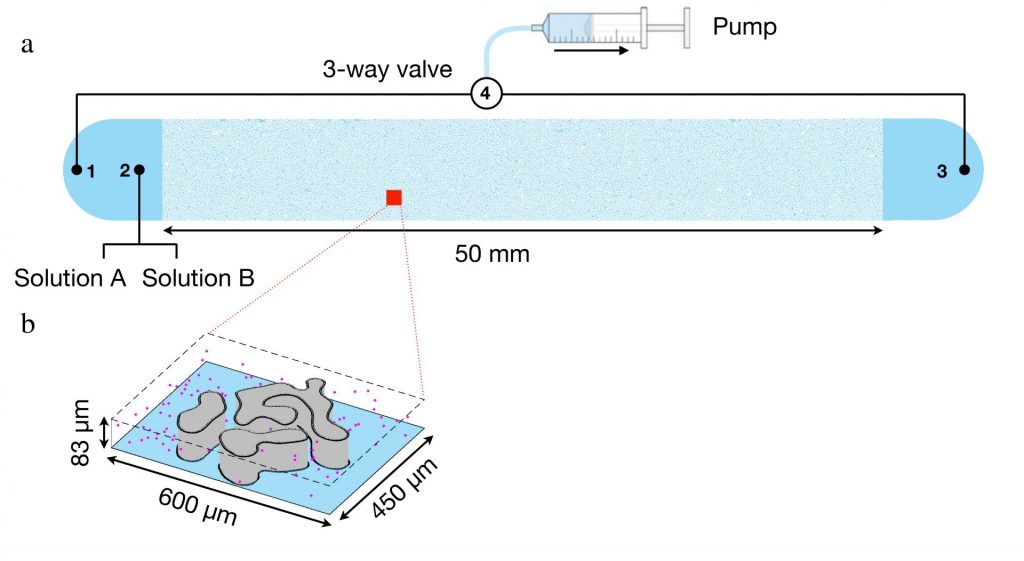
Once this setup was in place, we performed several experiments measuring particle transport through the microfluidics to determine if the simple models used so far held true. We found anomalies with respect to the expected results with diffusion delays.
Porous structures are networks of channels filled with particles or microorganisms in suspension which are interspersed with “dead-end” pores in which these flows are interrupted. These structures are present in soils, industrial filters, membranes or biological tissues. Microfluidics are designed to recreate the conditions of porous media with a homogeneous distribution of isolated channels and pores. This method is described in more detail in the Geoblog article: Day of a researcher – Pietro de Anna
We therefore designed an experiment that allows us to observe the transport mechanisms occurring at the microscopic level, in order to understand the unexpected effects observed at the macroscopic level.
Prof. Pietro de Anna
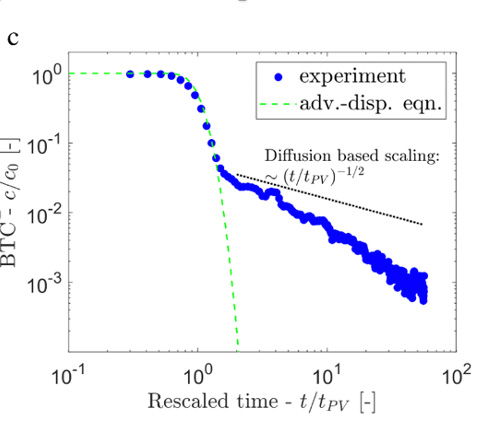
The microfluidics were filled with a suspension of colloids and a wash solution was injected into one end of the plate. The movement of the suspended colloids was determined by recording images at regular intervals using a fluorescence microscope. These images were then superimposed to evaluate the movement or stagnation of suspended colloids.
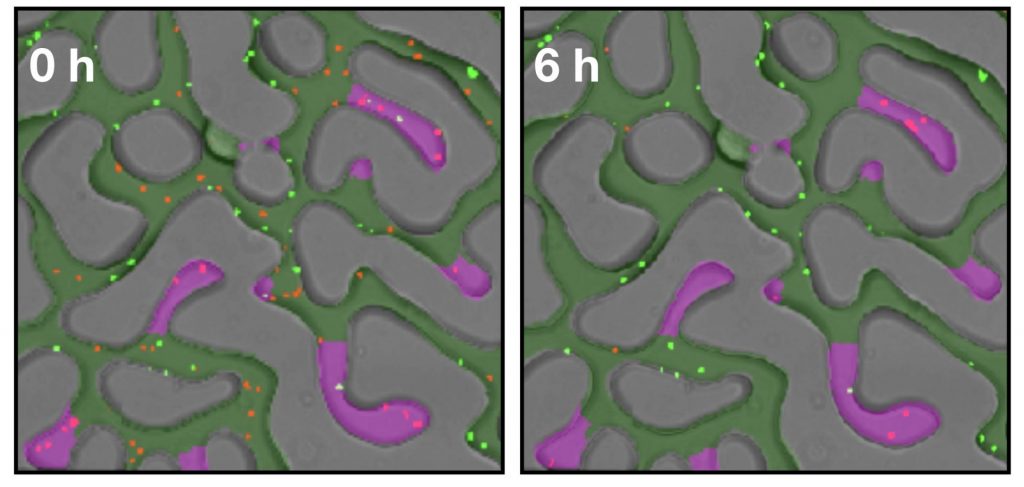
At the end of the experiment and the superposition of thousands of images, we were able to observe that a convective movement is created in the “dead-end” pores, which retains the particles inside. This is quite unexpected as it was not thought that such movements could be formed at such a small scale (about 20 microns).
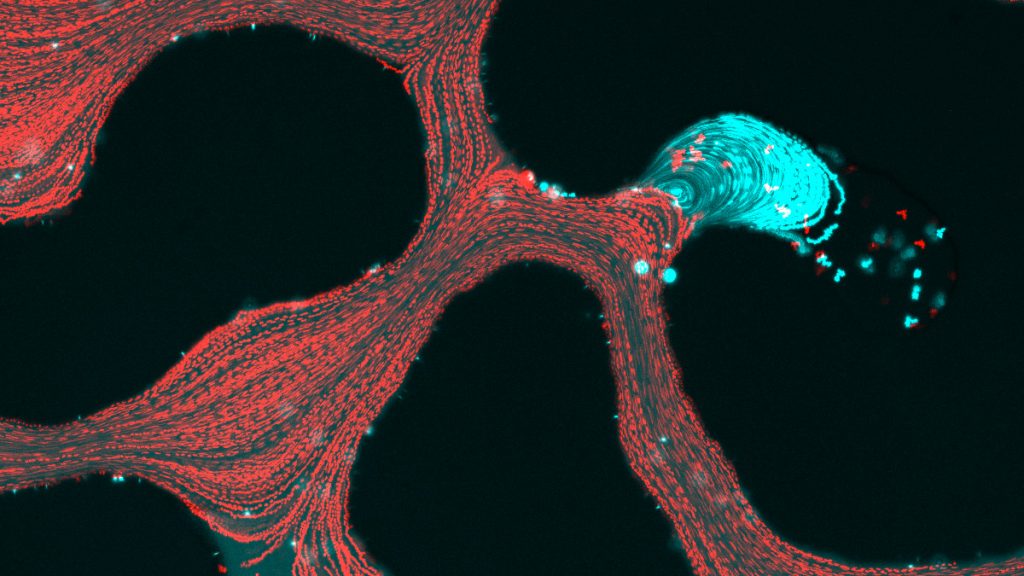
From these observations we have developed a mathematical model to describe these vortex phenomena. This model allows to describe the transport of particles through a porous medium at any stage of the transport. The determining elements of this model are the length of the traversed material and the pore size distribution.
Bibliographical reference
- Bordoloi, A.D., Scheidweiler, D., Dentz, M. et al. Structure induced laminar vortices control anomalous dispersion in porous media. Nat Commun 13, 3820 (2022).
doi.org/10.1038/s41467-022-31552-5
